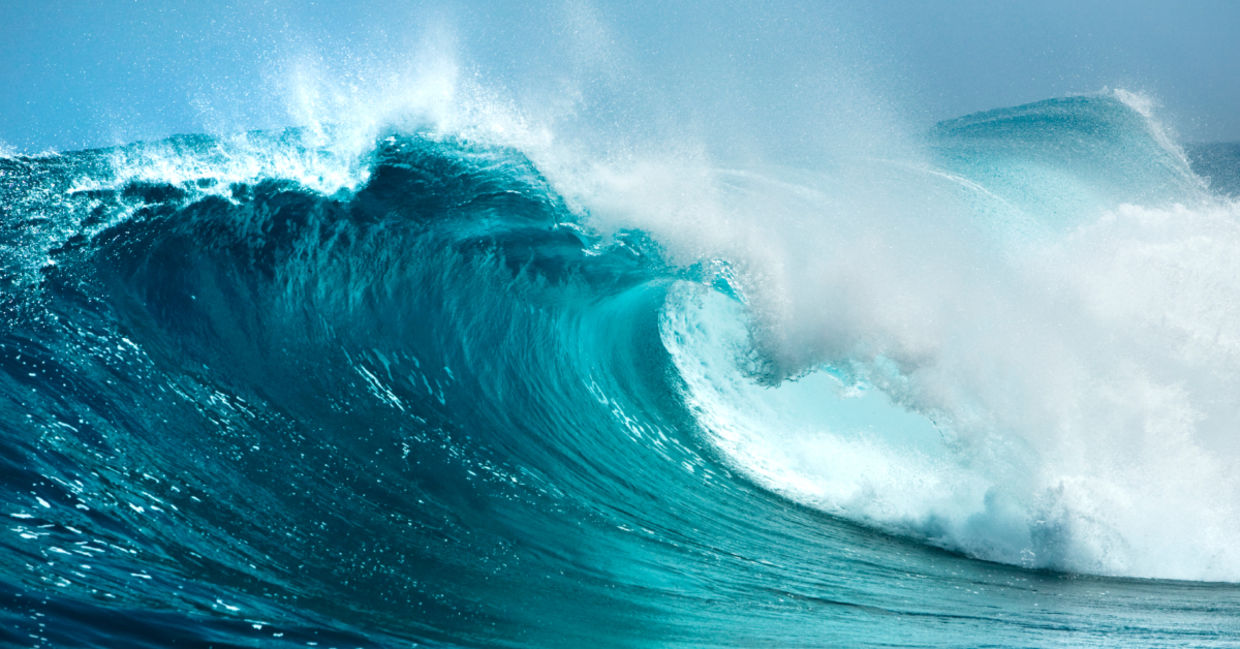
(somavarapu madhavi / Shutterstock.com)
Humanity’s been harnessing the power of water for thousands of years. Ancient Greeks invented water wheels and used water power to grind grain, according to Interesting Engineering. New, modern initiatives hope to build off this ancient wisdom, looking to the oceans and beaches as a potential source of clean, limitless energy.
PacWave, an Oregon-based testing facility is at the forefront of this endeavor. Scientific American reports. The company has been tasked with testing the dozens of devices that have been invented to draw energy from waves to find the most practical and efficient candidates. Not only is extracting energy from the oceans feasible, but researchers at PacWave predict that it will become a reality in less than two years time.
View this post on Instagram
PacWave
PacWave, owned by Oregon State University, built an 80 million dollar facility capable of testing 20 devices at once about seven miles offshore from Newport, Oregon, according to the Maritime Executive.
This facility will save time and money for developers who can now test their devices for producing energy from waves without having to get permits, power hookups, and find offshore areas to install them in.
View this post on Instagram
Wave-energy devices
There are all sorts of devices that the PacWave facility is testing, reports Scientific American. According to Burke Hale, the chief researcher at the PacWave facility, simple underwater turbines are already showing promise in capturing the energy of tidal movements.
However, such devices do have their limitations. “The problem is that they are highly localized,” Hales explained, because areas with the types of tides that work with these turbines aren’t too common, and they tend to be far from power grids.
Most tidal movements tend to be chaotic and multidirectional, with the waves moving up and down, back and forth, and sometimes even in circles. Another challenge of capturing energy from waves is that the devices have to be robust enough to withstand the salinity and rough movement of the waves.
One device being tested is a long snakelike tube, modeled after the “Pelamis Snake,” a device invented by the Pelamis Wave Power company in Scotland. The Pelamis Snake was a massive tube system connected by joints that allowed it to move in many different directions depending on the way the water hit it.
Levi Kilcher, an engineer for the Department of Energy’s Water Power Technologies Office told Scientific American about the gadgets at the PacWave facility.
“The devices are very different,” Kilcher explained. “Some look like snakes, some are flat, some are buoys that pop up and down. There could be a carpet-like structure that harnesses electricity by changing its shape in response to the motion of the waves. It’s the Wild West out there,”
Other wave energy conversion attempts
PacWave’s European counterpart is the European Marine Energy Centre, a test facility that is two decades old.
The United State’s Navy also runs a facility for testing devices to extract energy from waves in Hawaii. Their goal is to find devices that can power submarine drones that monitor underwater military threats like enemy mines and submarines. The U.S. Navy is interested in developing aquatic recharging stations powered by the movements of the water to extend the range of these robots.
All the research so far across international facilities points to the value of these underwater energy opportunities. According to Hale, wave energy may be able to produce up to 15 percent of the United State’s energy consumption in the future. He also predicts that PacWave’s facilities will be sending limited amounts of energy to the grid by 2025. Hale tells Scientific American that wave energy could be an important future source of power, since unlike wind energy, it doesn’t depend on weather, and unlike solar energy, “wave power does not set.”
YOU MIGHT ALSO LIKE:
Offshore Wind Auction Unlocks the Potential for Green Energy in the US
This Giant Sailboat Will Transport Cars Across the Atlantic Ocean
Ocean Farmers Grow Food That Cleans up Pollution and Tastes Good Too







